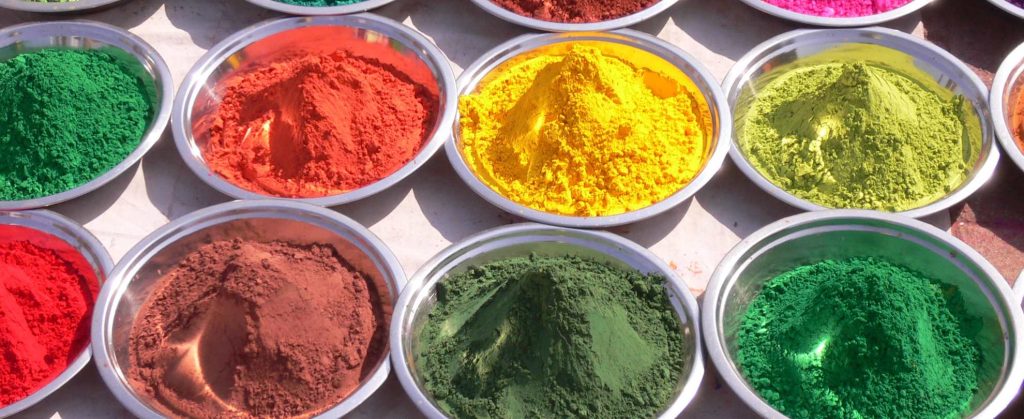How to choose a suitable ultra-fine grinding process for pigment production?

Pigments, as a colorant, are widely used in various fields: such as paints, inks, plastics, fabrics, cosmetics, food, etc. We can roughly divide colorants into two types: insoluble pigments and soluble dyes. Due to the insolubility of pigments, their coloring strength and color will be directly affected by the size and morphology of the pigment particles. Therefore, choosing a suitable and efficient ultra-fine grinding and pulverization process will significantly enhance the coloring performance of the pigment on the matrix material. In addition, pigment particles of a certain size and shape can change the absorption and scattering of light of different spectra, thereby changing the color and giving the surface of the base material a specific appearance.
Impact grinding
Mechanical impact mills can be used for fine grinding of soft to medium hard materials. Typical fineness ranges for median particle size are 20 to 500 μm. A choice of rotor types ensures stable temperatures during grinding. These characteristics of the mills make them suitable for deagglomerating pigment particles after drying. In addition, the easy-to-operate and clean design allows you to quickly switch between different materials. At the same time, the wide variety of grinding tools that can be installed on the mill means that they can be used to process a variety of different products and achieve different material finenesses.
Impact grinding machine with classifier
This type of classifying mill offers the possibility of achieving both grinding and classifying functions in one system. The CSM classifier is a combination of a fine impact classifier and a guide wheel classifier. Using two independent motor drives, one for the grinding disc and the other for the grading wheel, the CSM can precisely adjust the grading wheel speed to obtain a wide range of final product fineness from d97=9μm to 200μm. By utilizing the geometry of the classifier impeller and the air seal between the classifier wheel and the machine top cover, precise control of the upper limit of the particle size of the grinding material is ensured, thereby achieving fine classification.
Fluidized bed jet mill
This jet mill is suitable for ultra-fine crushing of materials of various hardnesses (soft to extremely hard). In the grinding area, the particles are driven by high-speed airflow to collide and grind with each other. There are no additional grinding parts. The dynamic classifier controls the maximum particle size. The air flow velocity at the nozzle outlet in the grinding chamber can reach 500 to 600 m/s. Because high grinding energy and impact speed can be generated in the fluidized bed, it is possible to achieve a D50 fineness of 1 to 5 μm.
If the products being ground are organic pigments, special attention needs to be paid to characteristic values that may cause dust explosions. This mainly involves critical energy, critical temperature and Kst value. Based on these data, adequate protection must be provided when limit values are exceeded. The first solution is to build a pressure shock-resistant device in the factory, including special elements such as explosion protection valves and rupture discs. The second solution is to operate under inert gas and reliably control the oxygen content of the plant.
Using a suitable ultra-fine grinding process can produce high-quality pigments with special flow characteristics and achieve the fineness and quality required for the final product. This optimized ultra-fine grinding and crushing process also increases the value of the product and reduces energy consumption and other production costs.
